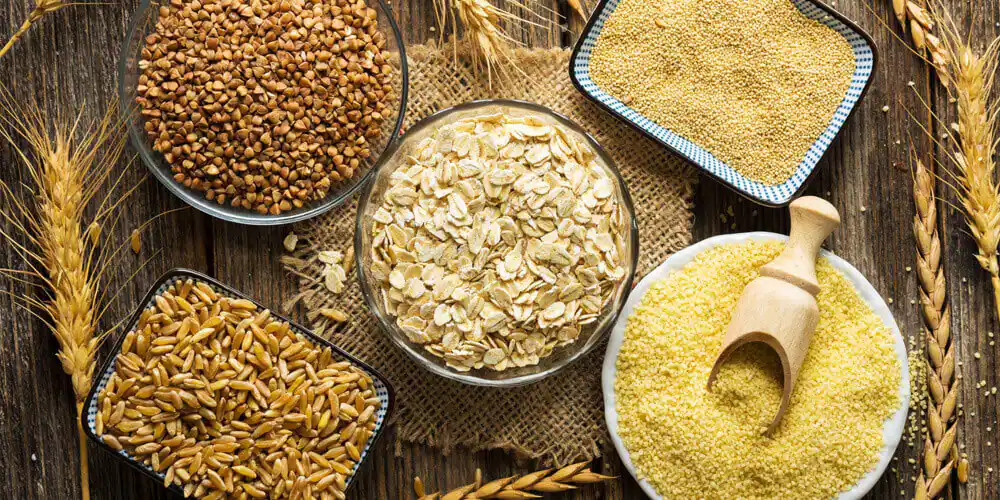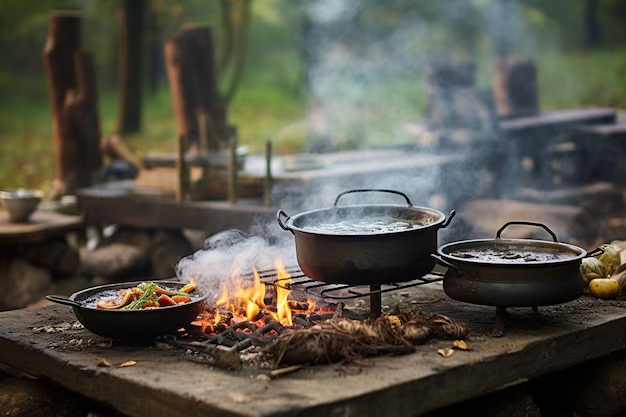Ancient Nutrition: A Journey into the Past
Ancient nutrition refers to the eating habits and diets of people from long ago. It includes the foods they ate, how they prepared them, and what they believed about food. Many ancient cultures had unique diets based on their environment, climate, and resources. Studying ancient nutrition helps us understand our health today. It shows us how food choices were made and how they influenced health in those times.
Understanding ancient nutrition can teach us about the benefits of whole foods. Our ancestors ate natural, unprocessed foods like fruits, vegetables, grains, and meat. They had a deep connection to the land and understood the importance of nutrition for health and well-being. This article will explore various aspects of ancient nutrition, from what our ancestors ate to how these practices can benefit us today.
The Foods of Ancient Civilizations
Grains and Cereals

In ancient times, grains were a major part of the diet. People cultivated different types of grains, such as wheat, barley, and rice. Grains were easy to store and could be eaten in many ways. They made bread, porridge, and cakes from grains. These foods provided energy and were often served with other ingredients.
Different cultures had their preferred grains. For example, Egyptians used wheat to make bread, while the Chinese cultivated rice as a staple food. Grains were also mixed with legumes, such as lentils and chickpeas. This combination provided a balanced diet, giving people the protein they needed for strength and health.
Fruits and Vegetables
Fruits and vegetables were essential in ancient diets. People grew and gathered many types of plants. Common fruits included apples, grapes, and berries, while vegetables like carrots, onions, and cabbage were popular. Fresh produce provided vitamins, minerals, and fiber, which are vital for good health.
Seasonal eating was common. Ancient people knew what fruits and vegetables were available at different times of the year. They learned to preserve food by drying or pickling, ensuring they had enough during the colder months. Eating a variety of fruits and vegetables helped maintain their health and prevented diseases.
Meat and Fish
Many ancient civilizations included meat and fish in their diets. Hunting and fishing were common activities. Meat provided essential nutrients like protein, iron, and vitamins. Ancient people hunted animals like deer, wild boar, and birds. Fish, especially in coastal areas, offered a healthy source of fats and nutrients.
Different cultures had different beliefs about eating meat. Some groups followed strict diets and only ate certain animals, while others consumed meat regularly. Fish was often a significant part of diets in places like ancient Greece and Rome. People found many ways to prepare meat and fish, from roasting to drying or salting.
Dairy Products
Dairy was another important food group in ancient nutrition. People raised animals like cows, goats, and sheep for milk. They turned milk into cheese and yogurt, which added flavor and nutrition to their meals. Dairy products provided calcium and other essential nutrients for strong bones and overall health.
Different cultures had their dairy practices. For example, in ancient Egypt, people made cheese and used it in various dishes. In contrast, nomadic tribes relied on milk and yogurt for sustenance while traveling. The use of dairy products helped ancient people have a balanced diet.
Traditional Cooking Methods


Fire and Cooking
Cooking with fire is one of humanity’s oldest practices. Ancient people used fire to prepare food, making it safer and easier to digest. They roasted meats, boiled grains, and baked bread. Cooking transformed raw ingredients into tasty meals, enhancing flavor and nutrition.
Each culture developed its cooking methods based on available resources. For example, people in colder climates built ovens to bake bread, while those near rivers used clay pots for boiling. These methods varied but had one thing in common: they brought families together for shared meals and traditions.
Fermentation
Fermentation was another vital method in ancient nutrition. People discovered that fermenting foods preserved them and added unique flavors. Fermented products, like yogurt, cheese, and sauerkraut, were staples in many diets. This process also created beneficial bacteria that helped digestion.
Fermentation allowed ancient people to store food longer. They learned to ferment grains to make beer and bread. This practice contributed to their diets and created community bonding, as many cultures celebrated fermentation in their rituals and gathering.
Preservation Techniques
Ancient people used various preservation techniques to keep their food fresh. Drying fruits and meats was common, especially in arid regions. This method removed moisture, preventing spoilage. Salting and smoking were other ways to preserve food, especially meat and fish.
These techniques ensured that people had enough food during lean seasons. They also allowed them to trade and share food with other communities. By understanding how to preserve food, ancient civilizations could thrive and develop rich culinary traditions.
Ancient Nutrition and Modern Health
Lessons from the Past
Ancient nutrition holds valuable lessons for our health today. By looking back at what our ancestors ate, we can learn the importance of whole, natural foods. Many ancient diets focused on fresh fruits, vegetables, grains, and lean proteins. These foods are still considered healthy and essential in modern diets.
Eating a balanced diet with less processed food can improve overall health. The connection to nature and the environment seen in ancient diets is also relevant today. Growing our food, choosing local produce, and being mindful of what we eat can lead to a healthier lifestyle.
Sustainable Eating
Sustainable eating is a concept gaining importance today. Many ancient cultures practiced sustainable farming and fishing, ensuring they did not deplete resources. They respected the land and used what was available. This awareness can inspire us to make better choices for our planet.
By adopting practices like crop rotation, preserving local biodiversity, and minimizing waste, we can create a sustainable food system. Embracing ancient nutrition principles can help us eat better while caring for the environment.
Conclusion
In conclusion, ancient nutrition provides a fascinating glimpse into the dietary practices of our ancestors. By studying what they ate, we can learn valuable lessons about health and well-being. Ancient diets focused on whole, natural foods, which are still important in modern times. We can improve our health by understanding and appreciating these practices.
Additionally, ancient nutrition emphasizes the importance of sustainable eating. By respecting the environment and making mindful choices, we can create a healthier planet for future generations. Embracing the wisdom of the past can lead to a brighter, healthier future for us all.
FAQs
Q: What is ancient nutrition?
A: Ancient nutrition refers to the dietary habits and food practices of past civilizations.
Q: Why is ancient nutrition important?
A: It helps us understand the connection between diet and health, offering lessons for modern eating.
Q: What foods were common in ancient diets?
A: Common foods included grains, fruits, vegetables, meat, fish, and dairy products.
Q: How did ancient people cook their food?
A: They used fire to roast, boil, and bake, and also practiced fermentation and preservation methods.
Q: What can we learn from ancient nutrition today?
A: We can learn the importance of whole foods and sustainable eating practices for better health.







